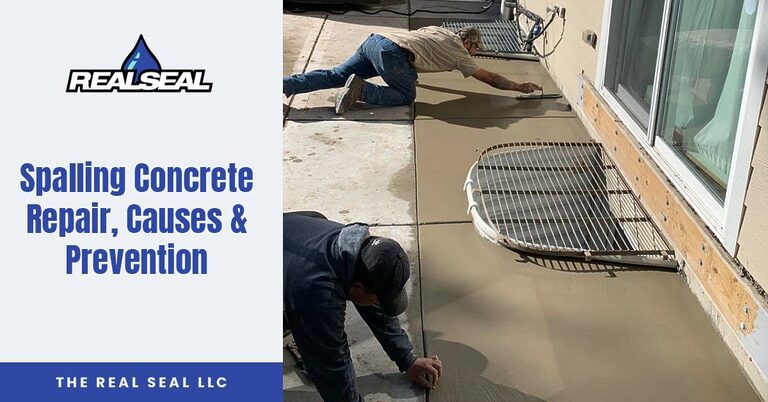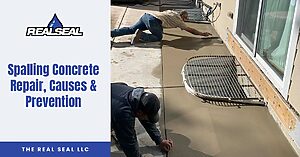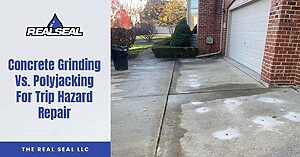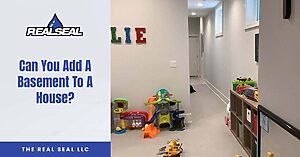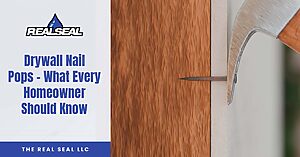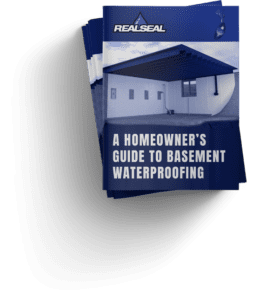Concrete is essential in building everything from homes to highways. But sometimes, it can crack and flake in a process called spalling, weakening the whole structure.
In this blog, we’ll explain what causes concrete to spall, how it’s repaired, and ways to help prevent it from happening. Knowing how to handle spalling concrete will help keep your structures safe and functional for many years.
Note: The Real Seal does not repair spalling concrete. If your concrete is spalling, please seek out a qualified professional for advice.
What Is Spalling Concrete?
Spalling concrete is when concrete begins to crack, chip, or flake away. This exposes the aggregate or reinforcement, which can lead to further damage. Spalls can measure 150 mm or more in diameter and 25 mm or greater in depth, with smaller spalls also possible.
What Causes Concrete To Spall?
Many factors can cause concrete to spall, including:
Corrosion And Oxidation Of Reinforcing Materials
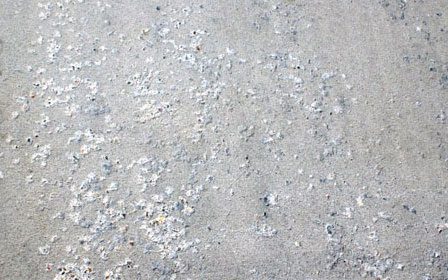
When steel rebar corrodes, the iron in the steel reacts with oxygen and water to form corrosion products or rust. According to the Portland Cement Association, rust occupies more volume than reinforcing steel.
This volume expansion generates internal tensile stresses within the concrete that exceed its tensile strength. Since concrete is relatively weak in tension, these stresses cause cracking and eventual spalling of the concrete surface.
Additionally, the corrosion process weakens the bond between the concrete and the reinforcing steel. As the steel corrodes and the corrosion products build up around the rebar, the concrete loses its grip on the steel. It can lead to localized failure and spalling of the concrete cover.
Fire Exposure
Concrete contains moisture within its pores. When exposed to high temperatures, this moisture turns into steam. The steam generates internal pressure as it tries to escape. If the temperature rises rapidly, the steam pressure can build up quicker than it can be released. It leads to explosive spalling as the pressure forces pieces of concrete to break away.
Freeze And Thaw Cycling
Concrete is porous and can absorb water. When the temperature drops, the water within these pores freezes and expands by up to 9%. This expansion generates internal pressure within the concrete.
Repeated cycles of freezing and thawing cause this expansion and contraction to occur multiple times, leading to the development of microcracks. Over time, these microcracks grow and join together, resulting in larger cracks and ultimately causing pieces of concrete to spall off.
Alkali-Silica Reaction
Alkali-silica reaction (ASR) is a reaction that can happen between alkalis and certain types of reactive silica minerals present in aggregates used to make concrete. This reaction forms a gel-like substance known as alkali-silica gel.
The gel absorbs water from the surrounding cement paste and swells over time. The swelling of the gel exerts expansive pressure on the surrounding concrete matrix. This pressure can initially cause microcracking, eventually leading to larger cracks and spalling of the concrete surface.
Inadequate Depth Of Cover
The depth of cover in concrete refers to the distance between the outer surface of the concrete and the nearest surface of the embedded reinforcement.
Insufficient depth of cover results in spalling due to the following reasons:
- The embedded reinforcement, such as steel rebars, is more exposed to environmental elements such as moisture, which can result in corrosion.
- Inadequate depth of cover makes the concrete surface more vulnerable to mechanical damage from external sources such as impact or abrasion.
- Loss of cover reduces the concrete’s effective cross-sectional area, weakening its load-carrying capacity. This could lead to structural failures or reduced service life.
Low-Quality Concrete
Low-quality concrete often has an incorrect cement, water, and aggregate ratio, leading to weak concrete. An improper mix design can result in concrete that is not durable enough to withstand stresses, leading to spalling.
Poor Finishing
Improper curing and poor finishing can contribute to concrete spalling by creating weak, brittle, and porous surfaces.
- Inadequate hydration leads to incomplete cement hydration and weak concrete.
- Rapid drying causes surface cracks and differential shrinkage.
- Overworking the surface creates a weak, porous top layer.
- Premature finishing traps excess water below the surface, weakening the concrete.
- Inadequate compaction leaves air voids and weak spots.
Deicing Salts
Deicing salts lowers water’s freezing point, meaning freeze-thaw cycles can occur more frequently at lower temperatures. Water-containing salts can infiltrate the concrete, freeze, expand, and create internal pressures that cause the surface to crack and spall.
How To Repair Spalling Concrete?
If your home is experiencing spalling concrete, it is vital to repair the problem immediately. Here are some steps professionals take to repair spalling concrete:
Surface Patching
Surface patching involves:
- Removing loose concrete.
- Cleaning the area.
- Applying a bonding agent.
- Filling the spalled area with repair mortar.
The surface is smoothed to match the surrounding concrete and cured correctly.
Epoxy Injection
Epoxy injection fills cracks in concrete by injecting epoxy resin into cleaned cracks, sealing them, and restoring structural integrity.
Overlay Or Resurfacing
Overlay or resurfacing involves applying a thin layer of concrete material over the cleaned and roughened surface. This method restores the appearance of the concrete and requires proper curing.
Sealers
Sealers are also used to protect concrete surfaces from moisture, chemicals, and abrasion. Topical sealers create a protective film or layer on the concrete surface. These are applied directly to clean, dry concrete surfaces.
Penetrating sealers creep into the pores of the concrete, forming a barrier. They do not significantly alter the appearance of the concrete surface but provide excellent protection against moisture damage and freeze-thaw cycles.
Concrete Replacement
Concrete replacement entails removing the damaged concrete section, preparing the base, and pouring new concrete. The new concrete is finished to match the surrounding area and cured to ensure strength.
How To Prevent Concrete Spalling
As in most cases, taking precautions to prevent concrete spalling is always better than repairing it.
There are several ways to prevent concrete spalling. Here are some of them:
- The right concrete mix: Using high-quality materials and the appropriate cement, sand, and aggregate ratio are critical. The concrete mix should be durable and suitable for the site’s environmental conditions.
- Controlled curing process: The curing process significantly affects the strength and durability of concrete. According to Penn State Engineering, the curing period for most concrete structures should be at least seven days if the temperature is above 5ºC (40ºF) or until the concrete reaches 70% of its specified compressive or flexural strength.
- Use sealers and waterproofing agents: Applying sealers or waterproofing agents helps protect concrete from moisture and chemicals that cause spalling. Choose a sealer that works well with your concrete mix and the environmental conditions.
- Regular maintenance and inspection: Regularly inspect and maintain concrete structures to catch and fix early signs of damage. This includes repairing cracks, fixing drainage issues, and ensuring effective waterproofing.
- Adequate concrete cover: Ensure enough concrete covers the rebar (reinforcement bars) to protect it from moisture and chemicals that cause rust and spalling.
- Proper concrete placement: Pay careful attention to how concrete is placed and cured. Avoid adding excessive amounts of water, as it can weaken the concrete. Ensure proper compaction to remove air pockets that can cause spalling later.
- Avoid deicing salts: Deicing salts are used in construction primarily to melt ice and snow on concrete surfaces like roads and sidewalks during winter. However, they can cause concrete to spall off.
The Significance Of Timely Concrete Spalling Repairs
Once concrete begins to spall, it can quickly spread and cause extensive damage. This is why it’s crucial to repair concrete spalling immediately.
If you notice any signs of spalling on your property, contact a professional concrete contractor immediately. They can assess the damage and provide a solution to prevent further deterioration. The sooner you address the spalling problem, the less expensive the repairs will be.
Note: While we provide this information to interested readers, The Real Seal does not repair spalling concrete. If your concrete is spalling, contact a professional who handles this specialized concrete repair.
If you’re dealing with an uneven concrete surface such as a driveway or sidewalk, a wet crawl space, or a suspected foundation problem, and you live in the Chicagoland area, including Naperville, Waukegan, and surrounding areas, The Real Seal LLC is always ready to help. Contact us, and we’ll happily provide you with a free estimate.
